The Highlands have been locked in a spell of high pressure and hard frosts this week bringing bright, windless days and crisp, golden light. This weekend, with the sun making a welcome return to the sky and the frost lingering in the shadows, I took the chance to get out with the family and explore the local countryside. A day for pulling on boots and crunching across frozen ground usually too wet and muddy to contemplate.
As we wandered, something caught my eye, a shimmer in the upturned peat, where the earth had been lifted and broken. I bent down for a closer look, and there it was: ice lensing in action. Thin, glass-like sheets of ice lay exposed in the disturbed peat, layered like fine crystal.
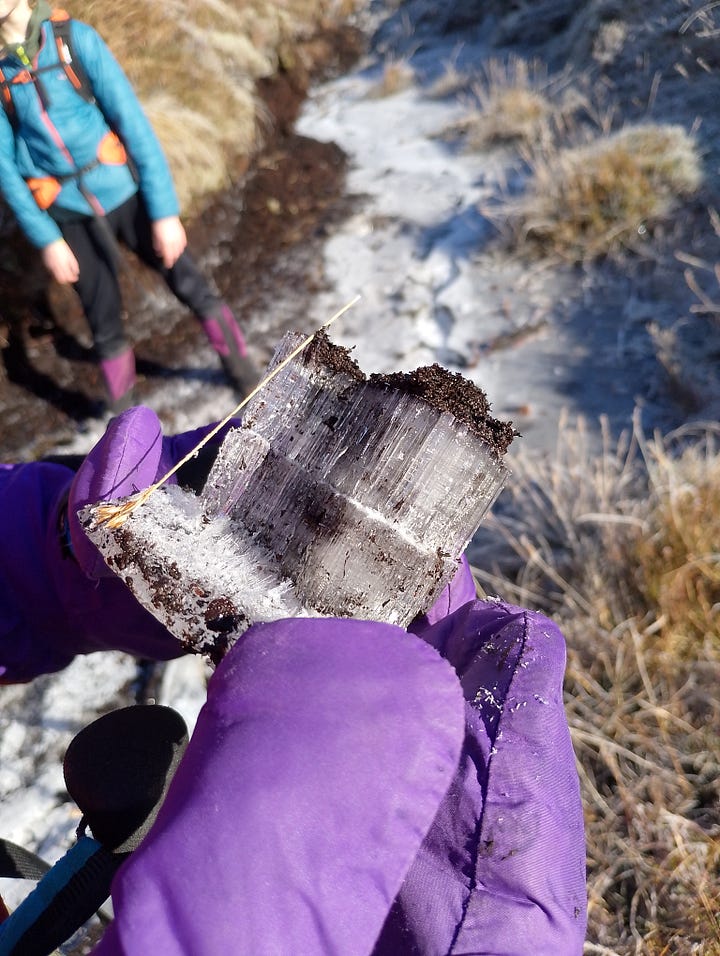
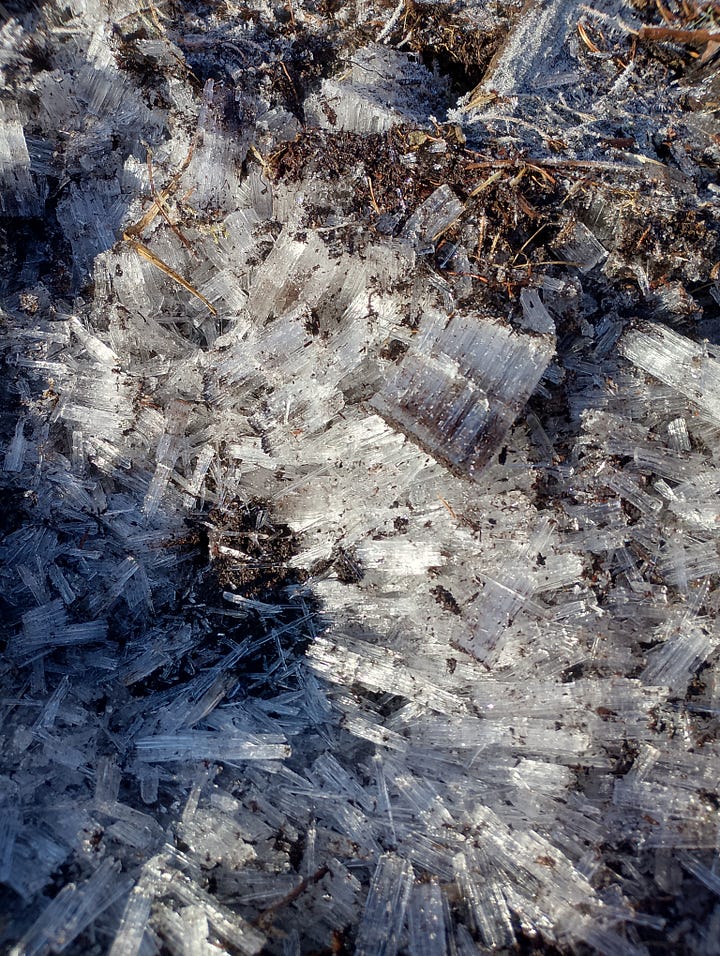
Ice lensing occurs when liquid water moves through the soil towards a freezing front, drawn up by capillary action. As the water reaches this frozen boundary, it crystallises into thin layers of ice. This forces the soil upwards. When the ice melts, the lifted ground slumps back, leaving cracks, depressions, and loosened peat vulnerable to erosion.
In mineral-rich soils, this process creates subtle undulations, small frost heaves that might crack paths or tilt fence posts. But in peatlands, where the ground is softer, wetter, and rich with organic matter, ice lensing can have more pronounced effects, particularly in areas where the surface is already under stress.
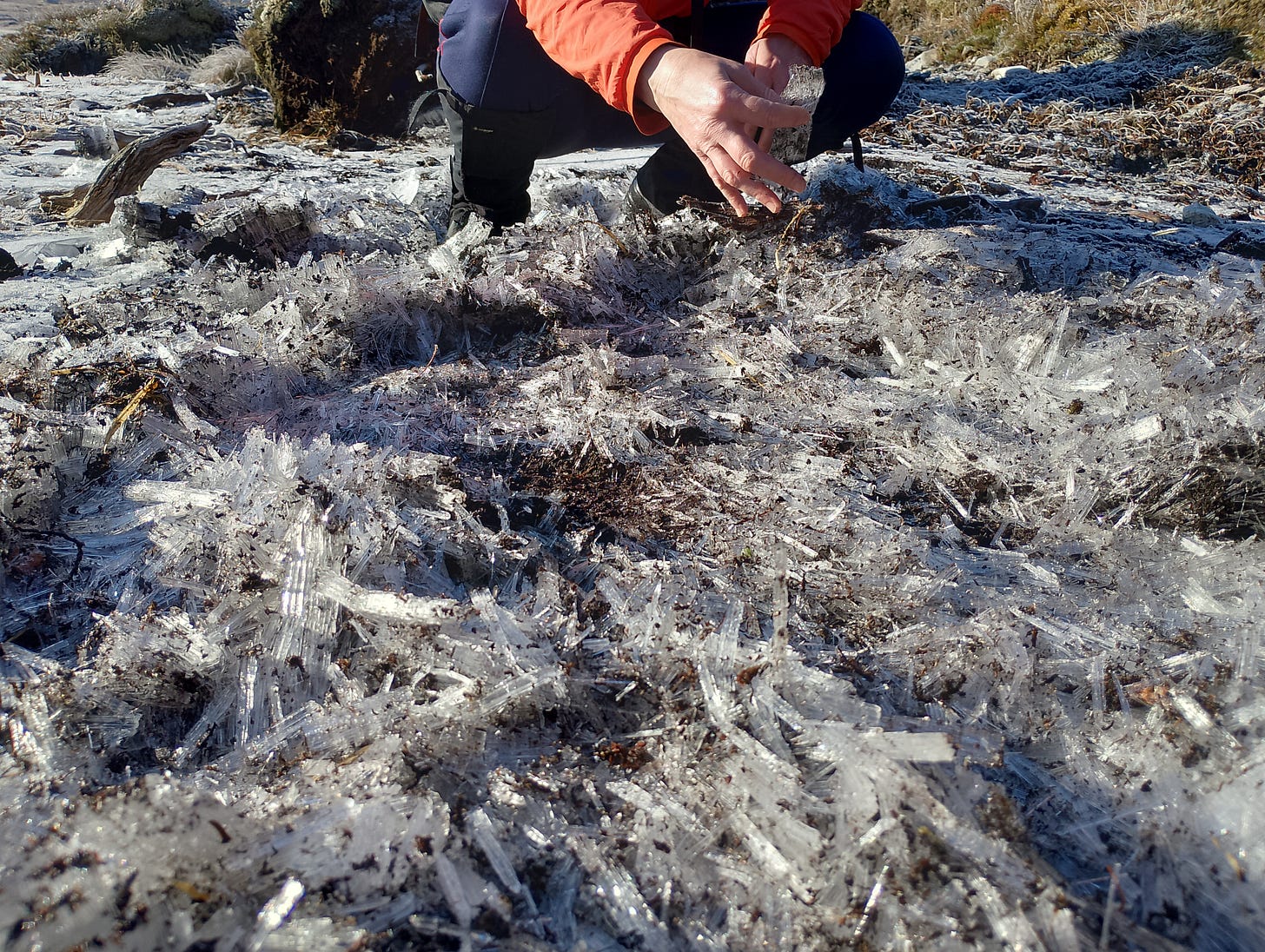
A fully saturated peat bog far more resistant to ice lensing, as peat, when healthy, holds its moisture tightly, leaving little room for water movement. But in areas where drainage, foot traffic from herds, or other disturbances have begun to dry the bog, pockets of space open up within the fibrous peat, allowing water to move. When frost takes hold in these drier patches, ice lenses form, subtly lifting and loosening the upper layers of the bog and thus speeding up the process of its degredation.
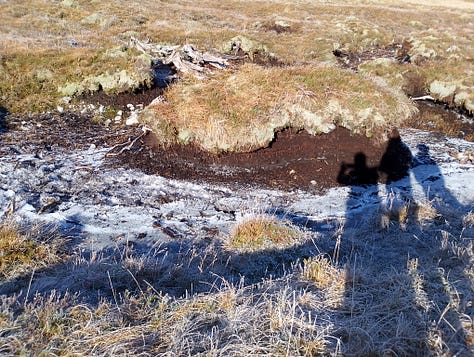
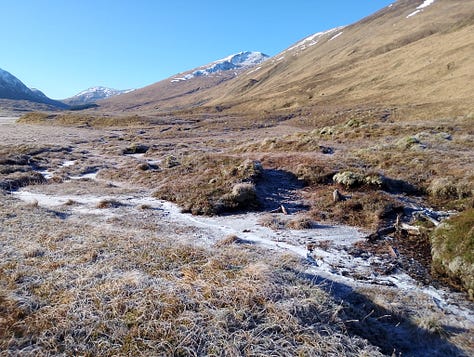
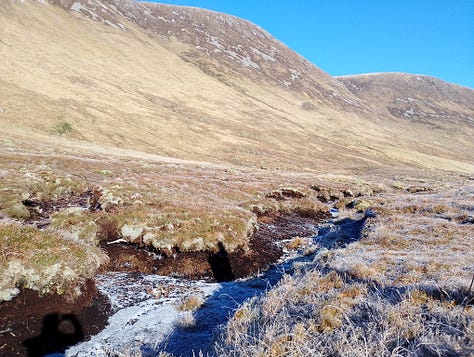
Peat banks slump, small gullies form, and the once-stable sponge of the bog begins to fragment. This is particularly concerning in areas where the peat has already been exposed, whether through natural processes or human activity, because once peat begins to erode, it is difficult to restore.
If you look closely on a frozen morning in ditches or the compost layer in your garden, you may see evidence of these delicate slivers of ice shimmering in the upturned ground, layered like fine glass, or curling up in thin, crystalline ribbons. When the first light of day catches them, they glow with an almost otherworldly beauty, and fragility. But looks can be deceptive! These are forces at work, a process at work that has played out for millennia. Even in the stillness of this sunny winters day the land is never truly at rest.
Imogen Furlong, the High Life Highland Countryside Ranger Manager, is known for her enthusiasm, organisation, and drive. Her deep passion for the Scottish Highlands' wildlife and extensive experience in outdoor education and recreation management have been central to this role. Imogen is a practical and collaborative project manager, empowering her teams to work effectively in communities and contribute to local conservation efforts.


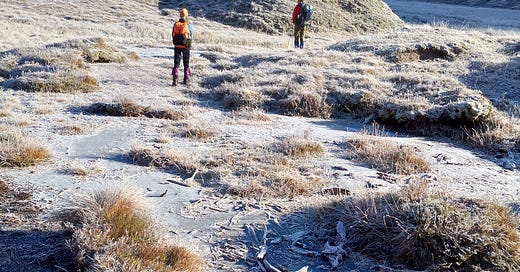


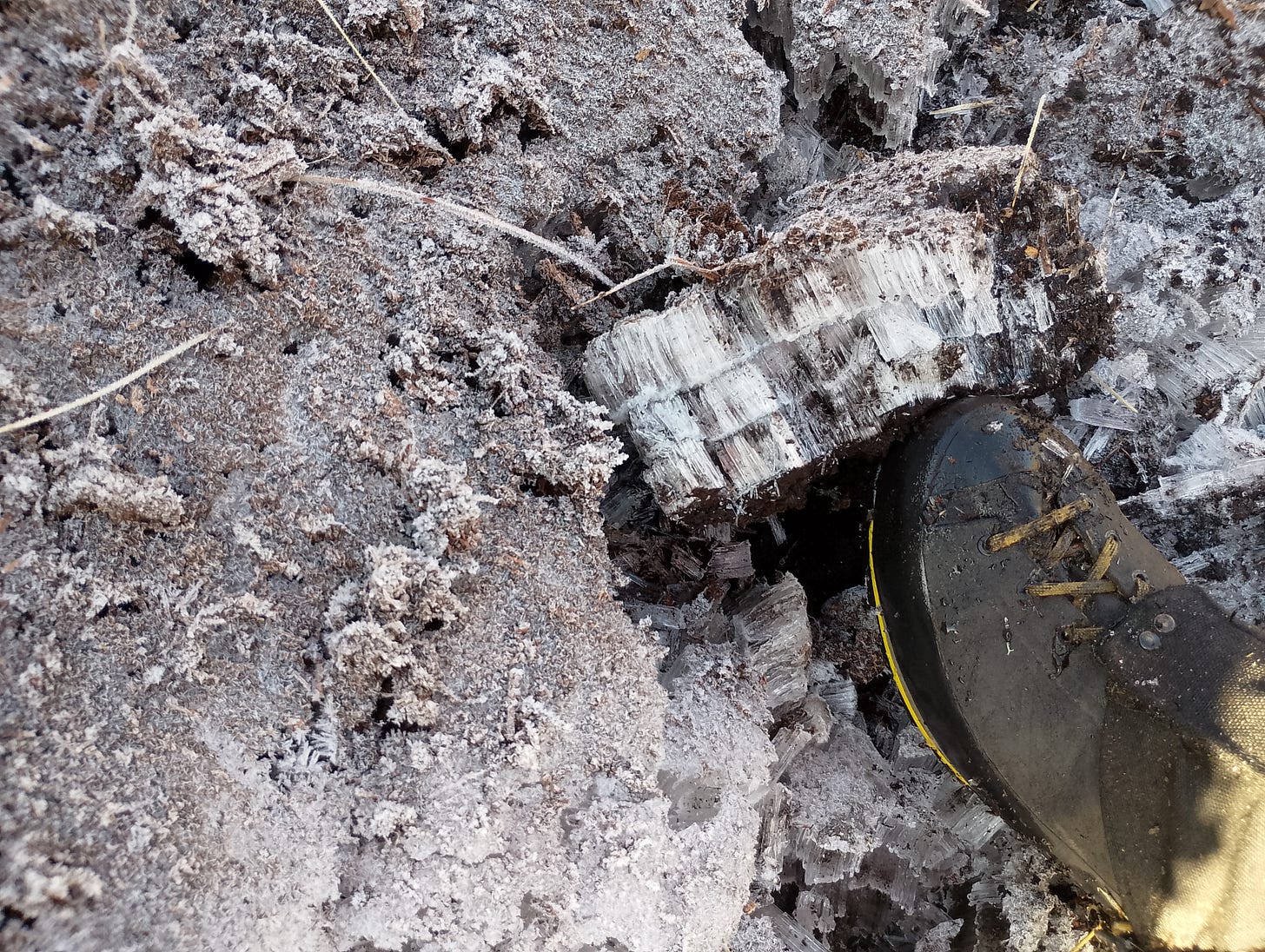
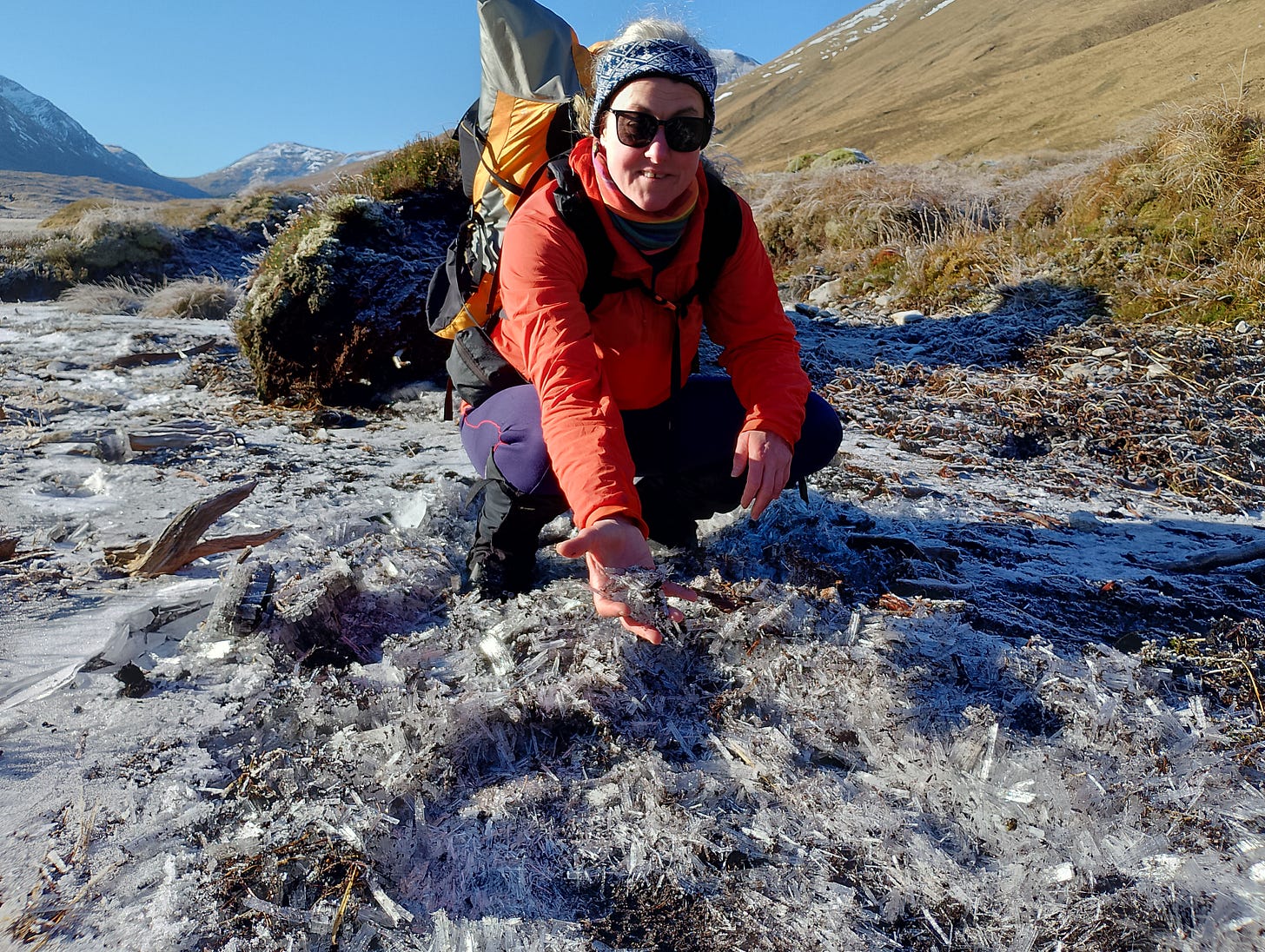
Didn't know about this phenomenon. Fascinating, thankyou
Never heard of ice lensing. Such an interesting read.